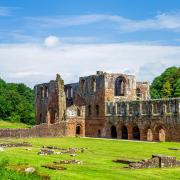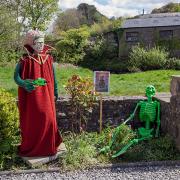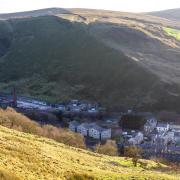The world’s most famous detective owes much to an historic school in the Ribble Valley, as Paul Mackenzie reports

The modernised adaptation of Sherlock Holmes starring Benedict Cumberbatch is winning the detective a new generation of fans, but his roots remain planted firmly in Lancashire.
Among the dusty ledgers and historic documents in a small room at Stonyhurst College sits a small box which contains some of the clues to Holmes’ beginnings.

Archivist David Knight leads the way along the school’s wood panelled corridors, through a staff lounge – all wing backed chairs, muted chat and teachers reading the Telegraph – and up a stone spiral staircase to a heavy wooden door.
The school records are kept in a dimly lit room which has hardly changed since the first Sherlock Holmes stories appeared in the late 1800s. Shelves polished by age and by use are crammed with well-thumbed leather-bound volumes, the ancient floorboards creak and the stone walls are barely visible behind centuries of accumulated ephemera. The only concession to the modern age is the computer tucked almost apologetically in a corner of the adjoining room.
This is one of the oldest rooms in the building, dating from the late 1500s when the Sherbourne family set about creating one of the finest homes in northern England. The family were Catholic and after suffering years of persecution, with distant relatives in the South West having inherited the building, it was offered as a temporary home to a Catholic school on the Continent which was fleeing religious harassment. After 15 years they decided to stay permanently and the school was given the building and 100 acres.

On September 15th, 1868 Arthur Conan Doyle arrived at the prep school, Hodder Place. He was nine years and four months old and his place at the school had been paid for by his uncles to help him get away from the family home in Edinburgh.
‘His father was an artist who had descended into drink and the family had come down from rather grand homes to some less salubrious circumstances,’ David said. ‘Doyle was then the only boy in the family and two of his uncles paid for him to escape.’
And almost from the moment he arrived, David said, it’s possible to trace the influences which shaped the stories that made his name.

‘At the prep school he met Francis Cassidy, the Jesuit priest who went on to be principal. He would tell the boys adventure stories and he and Doyle corresponded right up to his death.
‘There wasn’t a Holmes here at the time but one of the intake at Hodder with Doyle was Patrick Sherlock and two of the boys at Stonyhurst at the same time were the brothers John and Michael Moriarty. Michael was a very talented mathematician while his brother John was regarded as devious and not to be trusted. He went on to be Attorney General for Ireland.’
But perhaps the strongest suggestion that Doyle used Stonyhurst as the inspiration for his stories comes in David’s favourite, the Hound of the Baskervilles.

‘Baskerville Hall fits with the school. The description of the hall’s Yew Alley is strikingly similar to the Dark Walk in the Stonyhurst gardens, there is the long drive along the avenue to reach Stonyhurst, as there is to Baskerville Hall, then there’s the descriptions of the mullioned windows, twin towers, oak panelling, great fireplace, stag’s heads, coats of arms, corridors and dining room.’
But despite all the connections, and his childhood passion for the Holmes stories, David had taught at the school for eight years before he became aware of the school’s link with Conan Doyle.
‘I was sheltering from the rain in a shop on Anglesey and picked up a copy of one of his books and saw Stonyhurst mentioned in the biography,’ he said. ‘You wouldn’t be able to do that these days, no-one would be able to go eight weeks without knowing the connection.

‘There’s even a Moriarty here now, but I don’t think we need worry about her, she doesn’t seem like a criminal mastermind.’
The archives house a cartoon he drew for a publication which was circulated among the students, sepia-tinted photos of Doyle, letters he wrote and the log books which record the two years he spent at Hodder Place and his five years at Stonyhurst.
‘The school was geared towards toughening boys up for careers in missionary work and the like but Doyle reacted badly by being naughty and he claimed he had more punishments than any other boy. But he clearly didn’t hold a grudge against the school because he left his first honeymoon early to play cricket for the school’s old boys on a tour of Ireland.

‘He wasn’t a brilliant cricketer, although he did represent the MCC and once took the wicket of WG Grace. That was his only first class wicket, though. Doyle also played as a goalkeeper for Portsmouth
‘James Ryan was his only real friend here. He was also a Scot and they too corresponded for years. We tried and failed to buy the letters at auction. He went on to be a tea planter in Ceylon, much like the character Victor Trevor in the story The Musgrave Ritual, who was described as “the only true friend Holmes made at university”.’
So, given his personal and professional interest surely David must be delighted with the resurgence of interest brought about by the recent television and film adaptations of the stories. Apparently not.
‘To me Sherlock Holmes belongs in the fog bound gas-lit streets of Victorian London, with Hansom cabs and polite Victorian dialogue and social relationships. I have seen bits of the television series but not much.’



























